This week we went on an eagerly awaited University Of Wolverhampton, School Of Art, Photography trip to some galleries in the capital city. The plan was to meet up with Level 4,5 & 6 students from the Photography degree course and lecturers at Euston Station 11am then head over to the V&A Photography Centre followed by a visit to the Photographers’ Gallery near Oxford Street.
Parking Not Fine
Whilst the others from my course were going on the train, I prefer to drive to Stanmore and then jump on the Jubilee Line to the centre of London. I hit Stanmore car park exactly at the right time to catch a tube into Euston, but the car park was rammed, not a single space anywhere. No panic, I’ve been here before, off to Canons Park station where I usually get in if the primary destination is full. Only 4 mins around the corner but the car park is full and now I’m starting to get closer to being late. Next stop on the Jubile is Queensbury so bang that into the Google Maps and off again.
Queensbury is somewhere I’ve never been before in the car but I manage to find the car park and when I get there it’s full, apart from one single space that is barely a space and has awkward kerbing, fencing and bollards on one side and an SUV on the other side. Dammit, I’m definitely going to be late now, so I’ll try and squeeze my Skoda into the tight squeeze of a space. Hurrah, after a bit of toing and froing I get the car lined up in the space and jump out, frantically heading for the station whilst on the PayByPhone app paying the £6.20 for the 24 hours of parking.
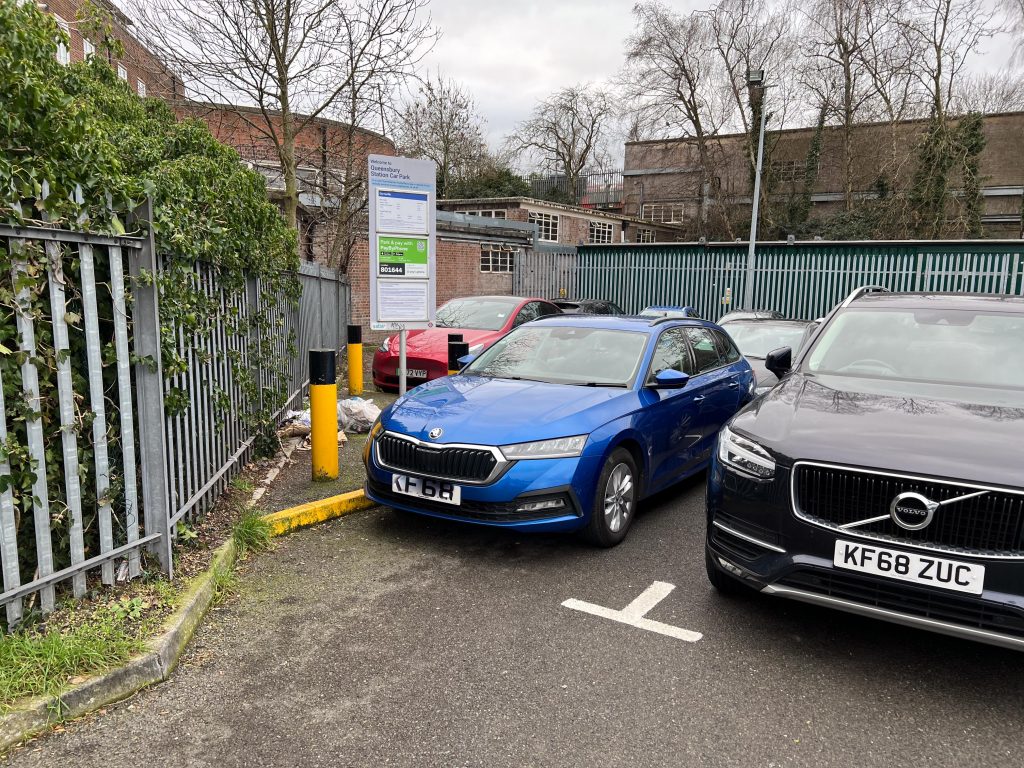
Onto the platform at Queensbury and then onto the next Jubilee line train, which according to Jago Hazard’s youtube video make a unique sound of all the trains on the underground. Whilst nearing Wembley Park I message my Level 5 group and say that I’m on my way. A quick change from Jubilee to Metropolitan Line at Wembley Park sees me going faster towards my destination instead of stopping every three seconds.
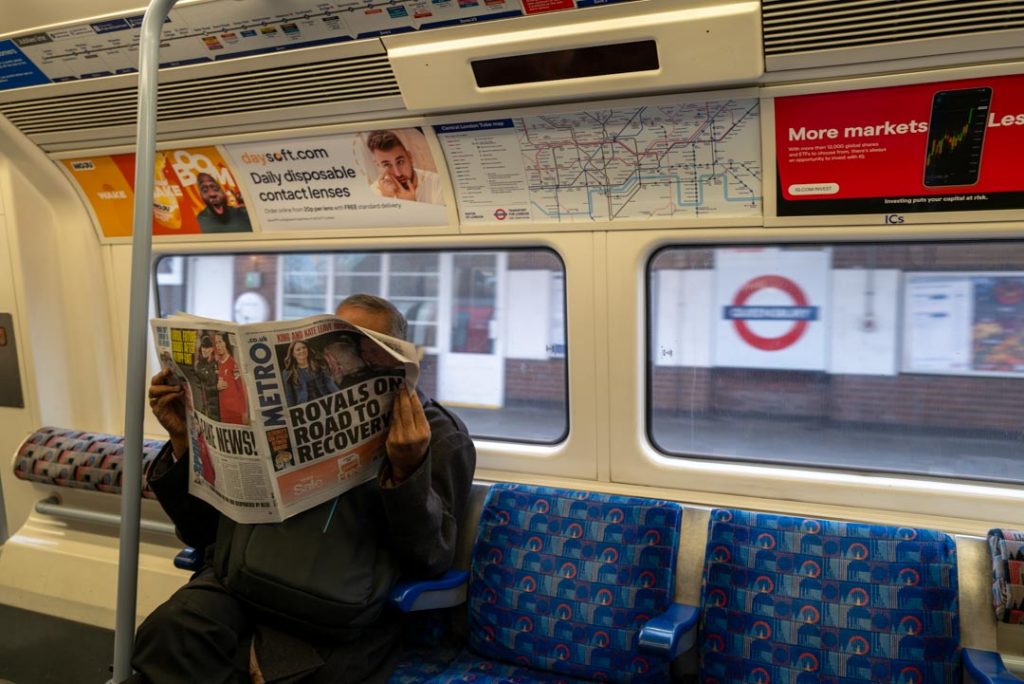
Out of the tube at Euston Square station and a short jog to the Euston Station whilst answering messages from lecturer Gavin, and apologising for holding the group up. I hate being late for group things like this and don’t want to annoy everyone.
Outside the WH Smith shop in Euston I see the group, the lecturers contingent consists of Euripides, Sylvia and Gavin, whilst the students consist of Angus (Level 4), me, Beth and Noah (Level 5) and Paul from Level 6. After apologising again, did I mention I hate being late?, we started on the journey to the V&A at South Kensington. Onto a Victoria line tube to Victoria, then change to Circle Line train for South Kensington and a short stroll through the tunnels towards the V&A. Euripides noticed that I had my camera out and had been snapping away so we had a discussion about our cameras and which cameras we’d like to use and our usual apparatus. We discussed his shooting of photos in places that are often in times of crisis and how he likes to capture images of the ways in which humans are resourceful when faced with limited choices. Heath Robinson approaches using odd parts to reach a goal especially when resources are limited.
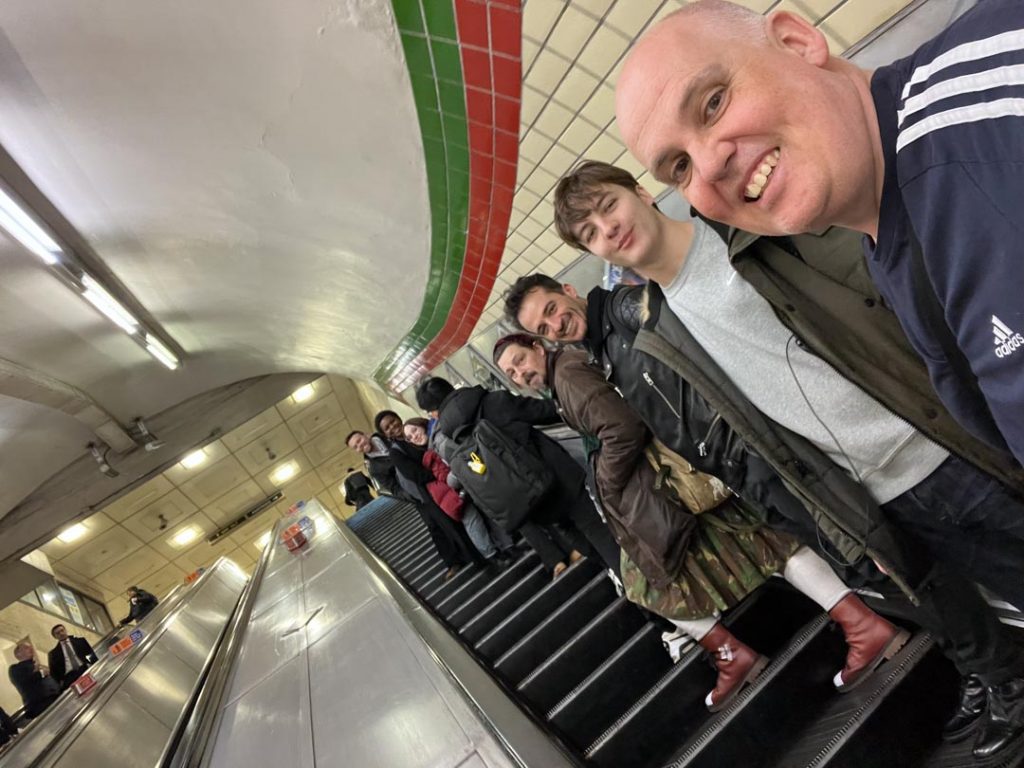
In through the doors of the Victoria and Albert Museum and a decision to split up so two of our number could get something to eat and the others would go to the Photography Centre, then meet up at this same spot at 2pm.
We had to walk through a few different galleries to reach the photography centre and when we got there, there was an installation of an AI produced music video showing drag artists performing a song and dance. The video shown on the screen was to illustrate how AI uses stereotypes and helps to perpetuate prejudice based on the background of the subjects. It was a bit like a Ru Paul number where the faces of the performers changed as the protagonist of Phillip K Dick’s A Scanner Darkly experiences when wearing his mask.

Into the Kusuma Gallery and there appear to be some books here for everyone, there’s a whole section on dogs which is right up Paul’s street. Gavin was delighted with some of the images in there too. Noah found a photography book containing pictures of Cars, not supercars but daily drivers such as those he makes images of as part of his year long project.
In the next room a wall of Gauri Gill’s images titled The Village On The Highway (2021) showed ramshackle homes made whilst Indian farmers were protesting against new laws and they weren’t allowed to enter the city to protest. It is a documentary of “David vs Goliath” as the farmers did get the law overturned and it’s interesting how Euripides and I were talking about how alternative uses are often found for items when required. Many of the temporary homes even have air conditioning installed. Euripides pointed out that he preferred the images that were “deadpan” square on and showing exactly the dwellings in one elevation, and that he would do this too, rather than an angled image which appears to him to be less documentary.

Also in this room was a vitrine full of Antony Cairns work, in which he’d photographed London and then got the images onto hacked e-readers (like an Amazon Kindle) then removes the screen from the device. Without the voltage and controller connected the e-ink is set in this position until it is disturbed electrically. The case held a few e-reader screens with images on and I thought this was a really nice idea, he had also captured them as collotypes.

On the wall nearby was a large and I mean large, image of a radio telescope made by Vera Lutter, who captured this scene using a shipping container converted into a Camera Obscura. It is presented here as a negative image, as it would be from the light hitting the photographic paper. It would have to be a large enlarger to produce a positive image from this, or it could also be done from a contact print with a. simple light.
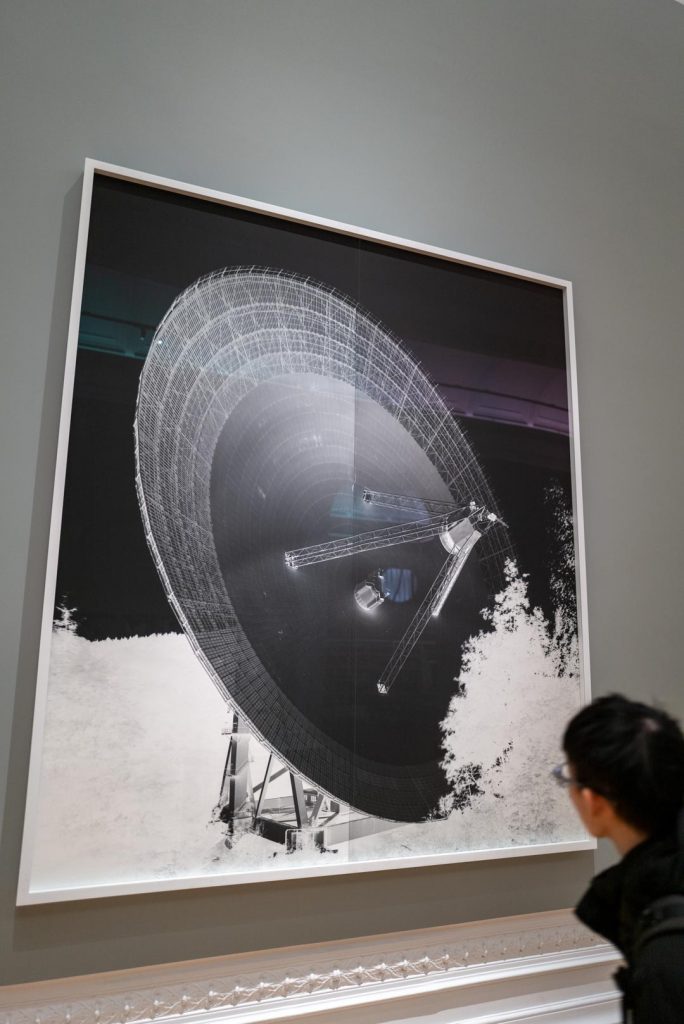
This camera obscura reminded me of my experiments with Dad’s bedroom at the tail end of last year and also an exhibition I saw in Tokyo Photographic Arts Museum a couple of weeks ago. by Homma Takashi. His exhibition was titled Revolution 9 and consisted of many camera obscura shots of places in Japan and New York. It was also a wonderful exhibition and I was lucky to see it whilst I was there on holiday. It reminds me of the fun you can have with some simple technology and the images you can get from these processes.
There was also a pair of rooms used as a camera obscura, with a chair in a brightly lit room and another curtained off room in which a lens mounted in the wall helped the image from the light room enter the dark room and get displayed upside down in the dark room. A couple of people stuck their heads in to the darkened side and then walked out after not seeing anything immediately. Once my eyes had begun to deal with the lower levels of light I started seeing the picture being shone onto the wall and grabbed a couple of photos of strangers and course mates.
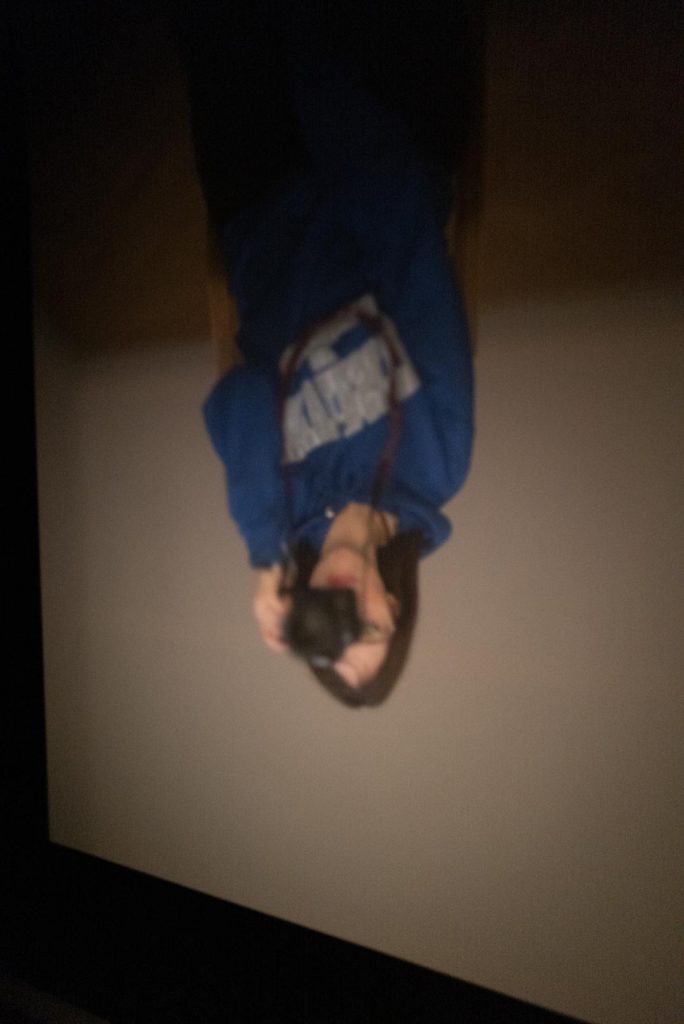
Vasantha Yogananthan had a series of images in the next room from the series A Myth Of Two Souls (2013-2020) whilst i didn’t connect with most of these images they were well presented and one photo caught my eye showing a subject wearing a checkered piece of clothing in front of a painted wall, painted with stripes and a geometrical pattern.
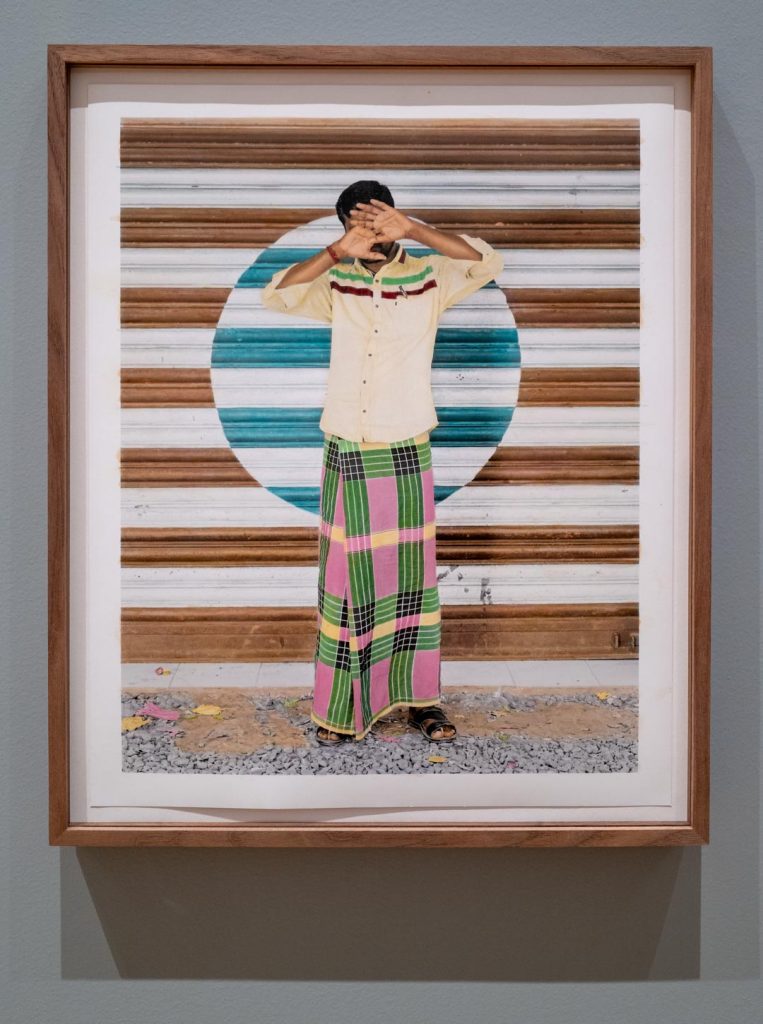
Another piece of work in this room by Noemie Goudal titled Giant Phoenix IV (2022) showed a large metal structure depicting trees that appeared to move and have a parallax effect when you walk around it. It was an interesting piece of work in the way it was presented but I didn’t spend a long time looking at it before moving onto the next section.
Moving into the other galleries there was a show called Energy: Sparks from the Collection. where some great work from a mix of other photographers was on display, Jo Spence, Bernhard and Hilla Becher, Naoya Hatakeyama and Ursula Schulz-Dornburg. The large print from Hatakeyama’s work is a large image of a quarry explosion where buried charges are detonated. Large fountains of rock are seen ejecting from the ground in what might appear to be an organic formation. It’s an impressive photo to me from a technical point of view. The photographer wouldn’t have been allowed to stand there so it must have been a remote shot, this brings with it its own challenges such as how many frames were taken with before or after this moment? Did it take several attempts to calculate or observe the best time to depress the shutter before this shot was made? Either way, it’s an exceptional photograph.
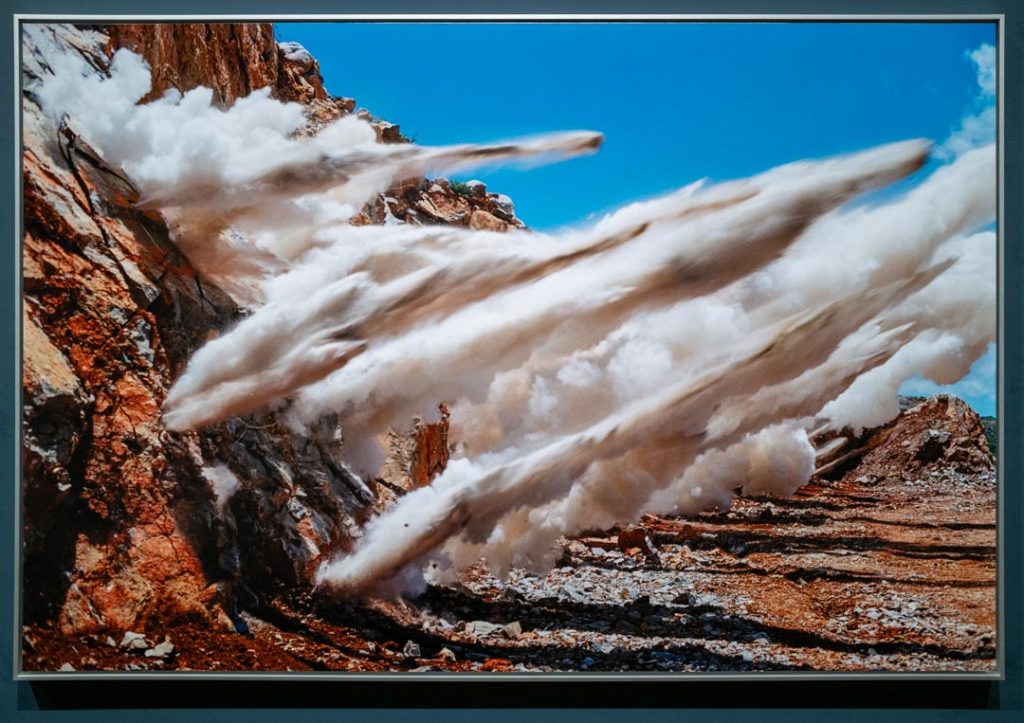
Sonnenstand (1992) by Schulz-Dornburg shows the same set of windows at different times of the day with the sun projecting it’s rays through the opening and creating what might appear to be a sundial depending on what time of day it was. Observing this takes time, obviously, but it can be tricky to find a day when it’s so sunny all day that the photos can be made all on the same day.
I like that if you go back to the same place at the same time a year later it should be relatively similar, give or take a couple of cosmological constants and gravity.
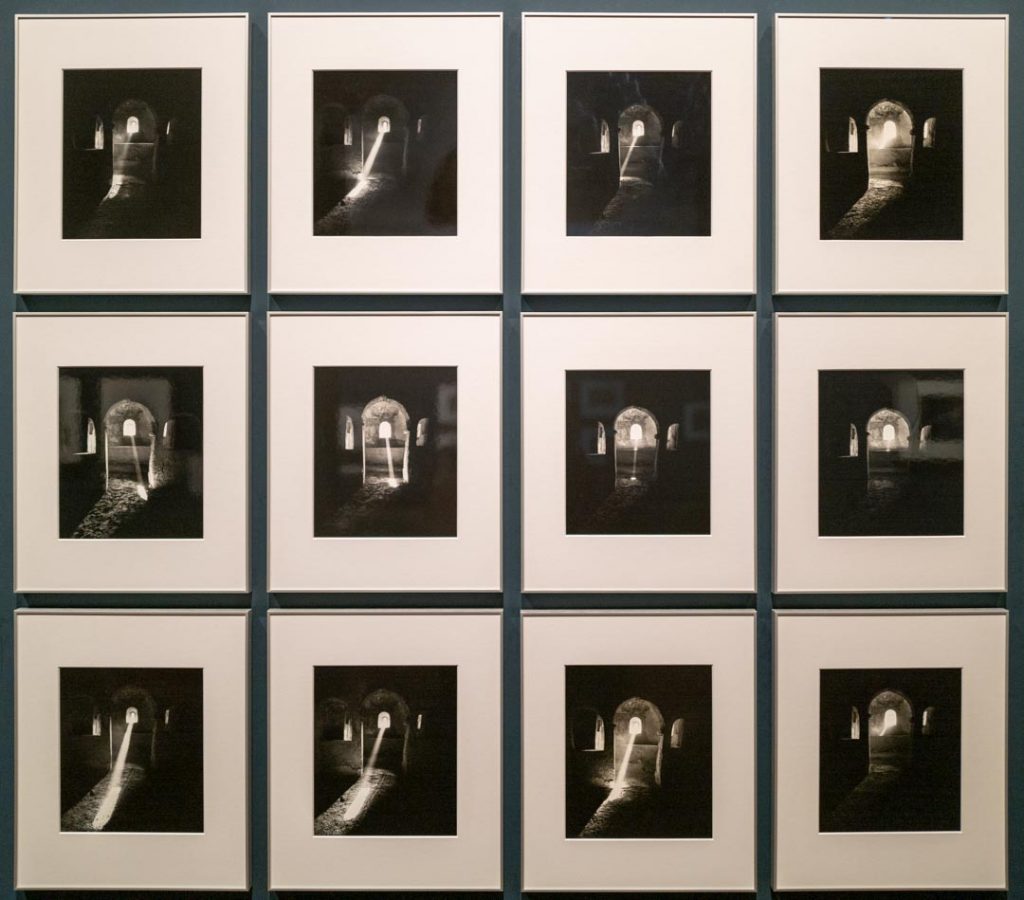
the other photo that captured my imagination in hear is from Harold Eugene Edgerton and is titled Atomic Bomb Explosion (1952) which shows a bomb detonating on the top of a tower, as can be seen in the new Christopher Nolan movie Oppenheimer. It’s a super fast photograph showing the chain reaction getting underway and consuming all oxygen in it’s way leading to a shockwave about to be produced. Again, it’s a technical marvel that this image was captured in the same way that the Hatakeyama image was timed to capture the precise moment being looked for.
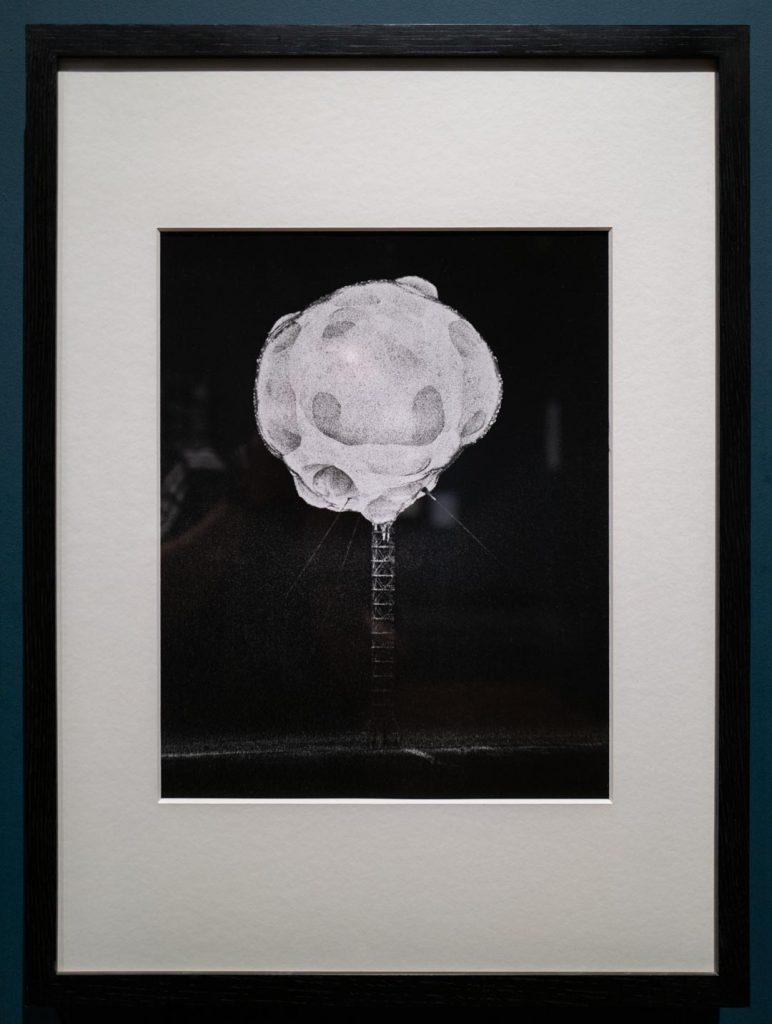
In the gallery on the other side of the wall there were a few interesting photos and collections, one of which was the 3D stereoscopic images in a special set of viewers. The old technology to capture the images a few inches apart (the width between the eyes) and then print in the same distance providing the 3d experience must have been a marvel at the time also. Today though we are spoilt with Virtual Reality and even AI created realities.
Before we left the Photography Centre of the V&A I had a stroll into the Musical Theatre section but it was smaller than before owing to some refurbishment works being carried out. There were a couple of costumes, wigs and other accessories from the musicals but most of it was fenced off, bit if a shame because my wife and two kids love musicals.
As I was walking out of the photography centre I noticed a few cabinets with artifacts in that lit up when people stood in front of them, I guess that the lights dim when nobody is there to help with the preservation of the colours and materials. I had noticed that the lights from these cabinets shone up the walls projecting a straight line or two of light up the wall, and if both sides of the cabinet were lit, it created a crossover of light that I found pleasing to the eye.

Circus Time
Once done taking photos of these we met up and headed back down the tunnels to South Kensington underground station, jumped on the Piccadilly line and headed for Piccadilly, then a short walk down Oxford Street to get to the photographers’ gallery. A couple of the group had never been to London before and were snapping away around Piccadilly and Oxford street as it was all new. It can be a little overwhelming at first heading into London like this but after a couple of trips you realise that it’s fairly easy to navigate your way around.

When we arrived at the Photographers’ Gallery we were let in and suggested that we start the exhibition from the 5th Floor and work downwards, this was the same as the Chris Killip exhibition here in October 2022, I’d also seen the Helen Levitt exhibition in January 2022 here, both were fantastic.
Stepping in the lift we were surrounded by eyes looking at us from the walls, we’d find out later that this appears in a couple of the photos on display. Alighting from the lift we stepped out into the 5th floor and amongst the retrospective of Daido Moriyama, Immediately walking into the room crowds the senses with a raft of black and white images and text on the walls. It was impressive to see and was completely different from the subtlety that the Killip exhibition evoked.
A large explanation of the photographer on one wall and then lots of photos of different subjects in Japan, what seemed to be mostly documentary or street photography. Copies of books, magazines, zines and other publications. were laid out in vitrines to be viewed also and these put some of the images into context, when they appeared to be mixed up on the walls. This mixing is done on purpose as a way of making another series out of the series’ that already exist. It’s a wonderful couple of rooms full to the brim of images and plenty of explanatory texts for describing why the serieses of images were made, but not necessarily explaining each photo.
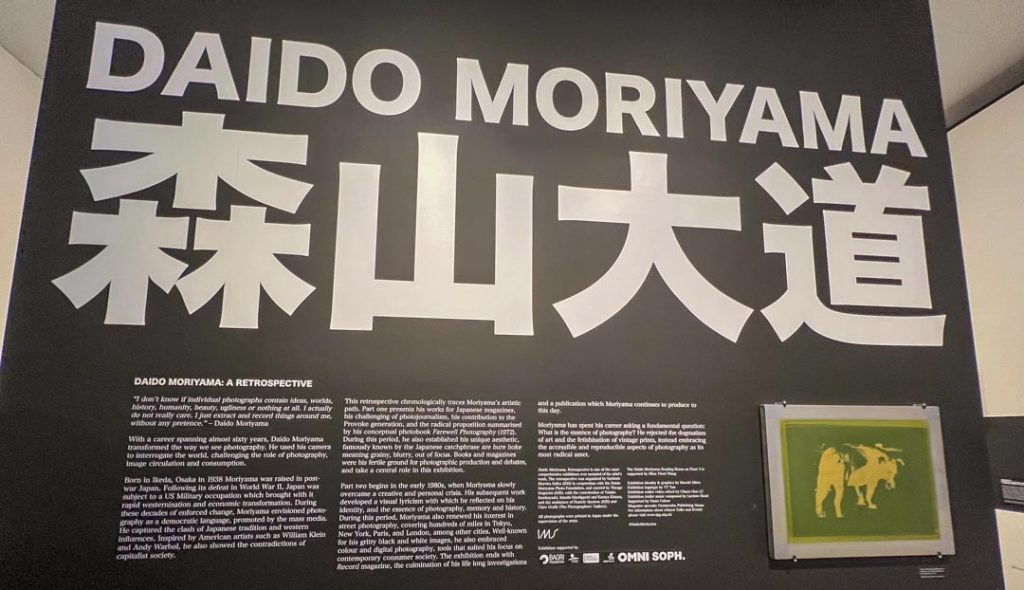
There were some interesting images in this gallery that seemed to feature a population of an area all visiting the beach for the day and a photo that was high contrast seemed to make the photograph difficult to comprehend. The whites and blacks of the pictures took over almost all of the greys and the photo Zushi Beach in the Kanagawa region (1969) brings to my mind the photos of liberation of concentration camps in Europe at the tail end of World War Two. One photograph, a part of the Accident series was a black and white image made through a telescopic lens and Euripides helped me to understand that Moriyama probably used Tri-X film and developed it using Rodinal developer. Euripides said that there is a knack to using Rodinal developer to get the images as appear here but that misuse can lead to clumps of grain rather than a uniform graininess.
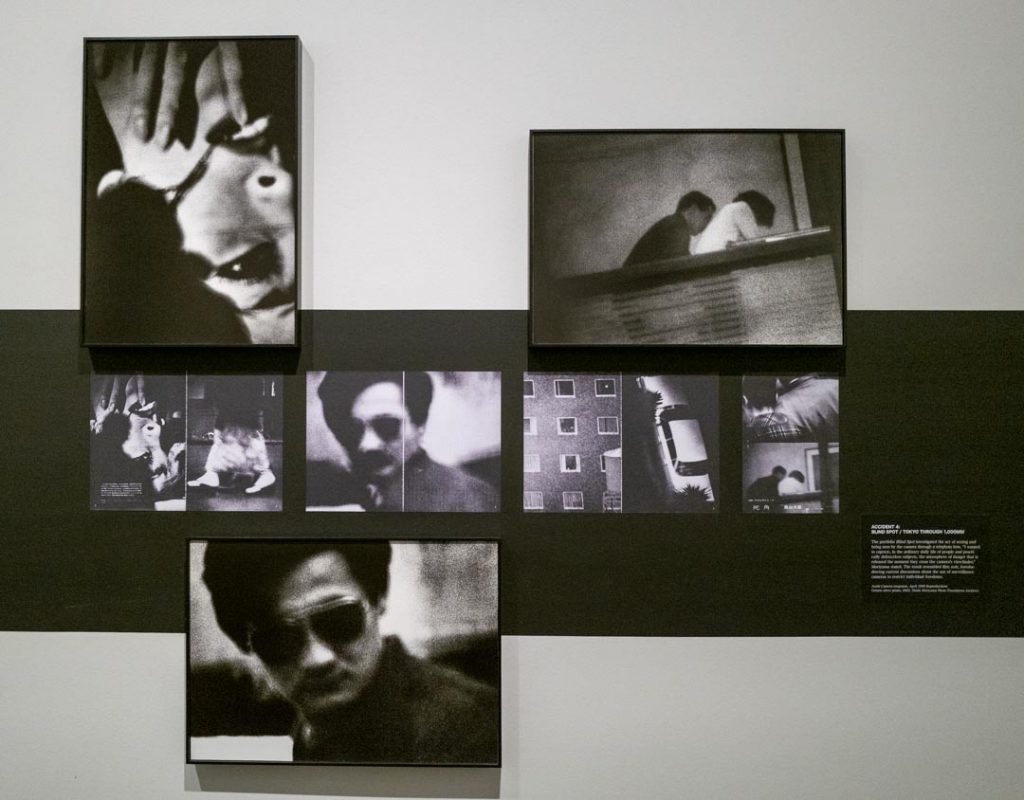
Some of the images are framed and hung, some are hung in frames so closely packed that they appear as one piece whilst many others appear to be printed onto the wall covering, some with titles and explanations but also some without. Some photos appear to be Street Photography as we know it today, wandering around a city taking pictures of scenes or objects that capture the photographers attention. Some of the photos I saw reminded me very much of some of the images I’d made earlier in the month when I was off globetrotting in Tokyo. Even the locations were familiar, Shinjuku, Asakusa and Shibuya were places I’d been and made my own photographs. One difference though is that Moriyama’s appear to be a little nearer to the action and to some moments when a foreigner like me might have been treated with a little more suspicion.
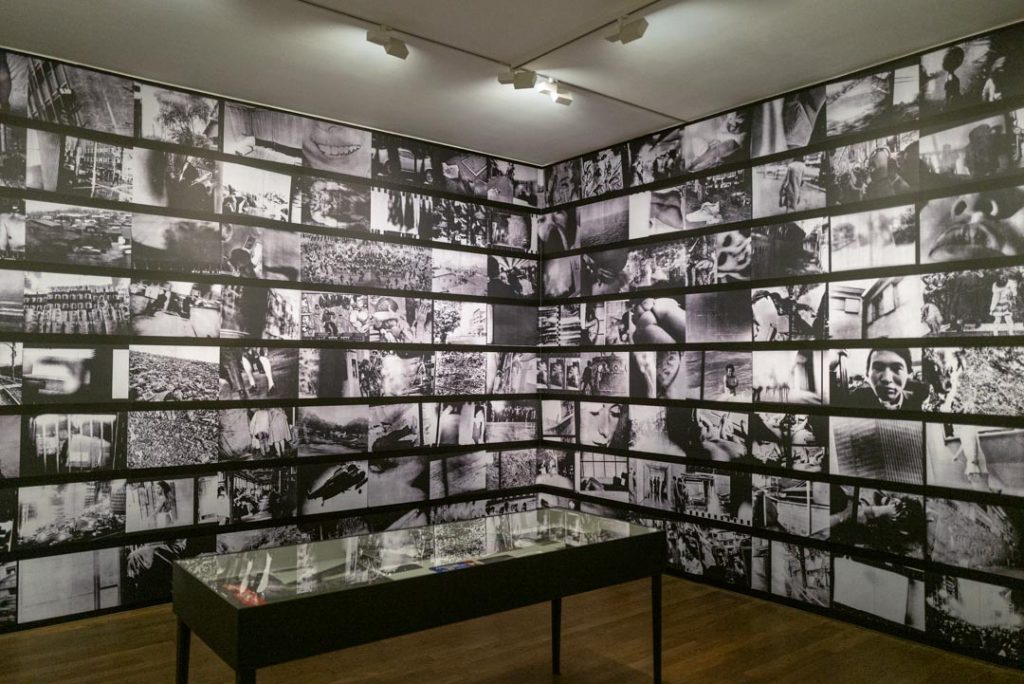
Moriyama also made colour images and they work really well, capturing the bright colours and even the dirt and age of the surrounding locations. One of the images that I found intriguing was a woman in a white looks like she’s being pursued by the photographer and makes her barefoot escape through a trash strewn alleyway. This image titled Yokosuka, Kanagawa (1970) and appears in the exhibition and accompanying book (pg. 98) in Colour as well as in black and white. The colours convey an image that could be from a thriller movie whilst the black and white image seems to show some sign of poverty. Strange how the same image in different presentations can have a different meaning.
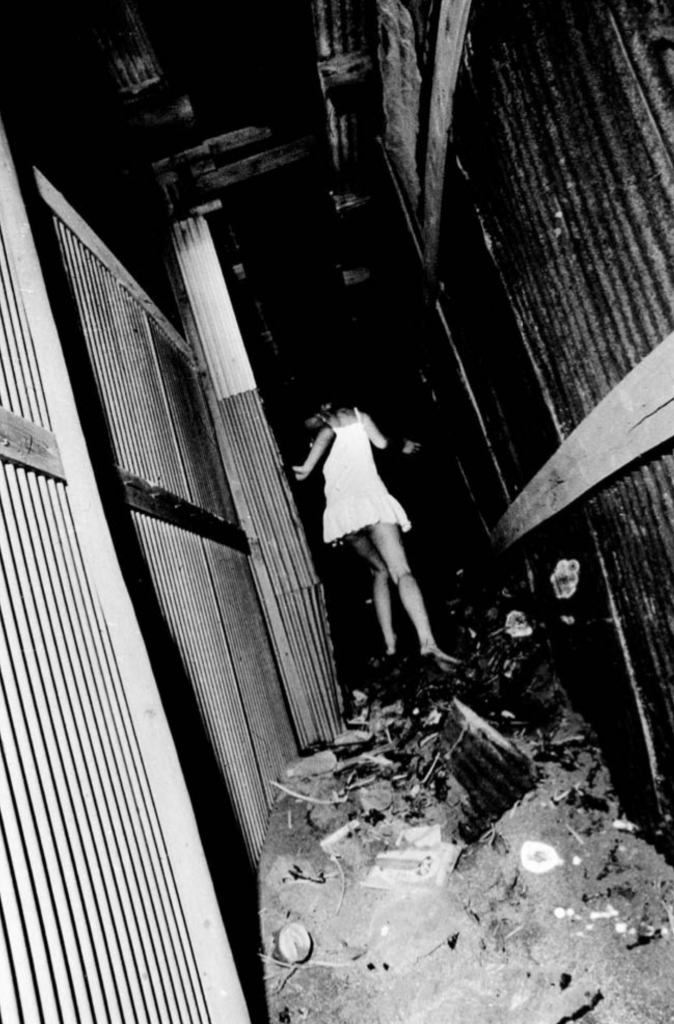
Satirical & Lyrical.
Most of the photos that appear in this retrospective are also featured in other publications and are a project in form, each project appears to be separate from the others yet does have a constant tied in theme that let you know it is the work of Moriyama. It’s clear to see that he has made many great images over the years and it’s also good to see that some of the contact sheets are also displayed showing that it’s not a one shot-one hit affair. Some of the images are uncomfortable to spend a lot of time in front of, some give an instant endorphin hit and in a couple of cases a snigger of laughter from myself. Some of the contrasts in pictures is quite satirical but they have a conversation with each other that is very lyrical.
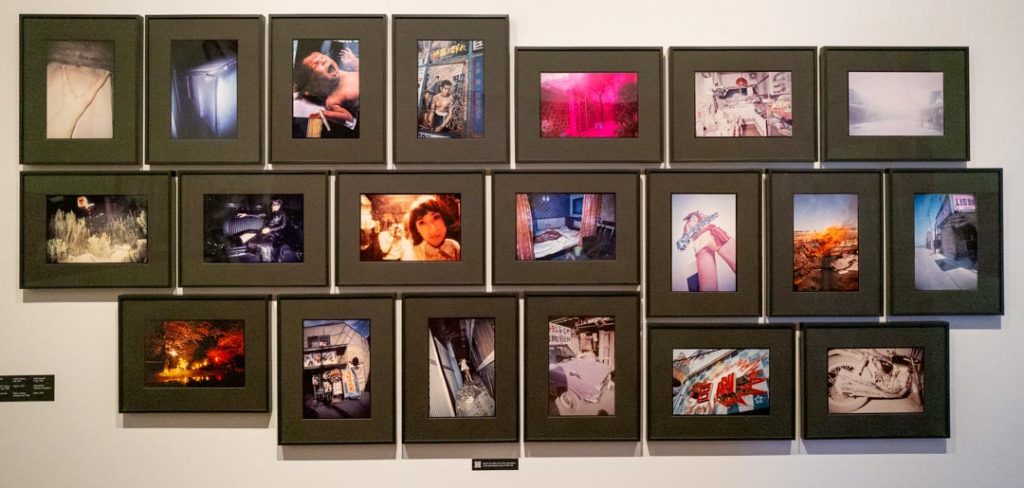
Each of the floors of the exhibition are packed with images and the reading room containing copies of the publications with Moriyama’s work in is well worth spending a few minutes looking at each book in turn. It’s also a good way of deciding which book you’ll buy from the hugely well stocked shop in the basement floor of the gallery. I decided that rather than select just one collection of work, I’d do the same as the Killip exhibition and purchase the Retrospective book edited by Thyago Nogueira. It’s full of images from all of the publications and with a few essays and articles collected in the last third of the book. These will be read through and countless sticky page markers will point me back to pertinent parts of the texts for future essays and assignments.

New Horizons
When 4:00 pm rolled around and everyone in our group had seen what they wanted to it was time to sit and have a quick chat before splitting up and heading our separate ways. Some were off to meet friends, some straight back to the underground and Euston to head back to Wolverhampton. Myself, I’d planned on staying in the city for a few hours longer and had spotted a free and new observation deck in a building. I was googling for 22 Observatory but found nothing, I was sure it was something like that. After searching for free observation spots in google, Horizon 22 arrived in the list of results but it closed for entry at 6pm. It was called that name as it is at 22 Bishopsgate, near the Leadenhall building, the Gherkin and the Walkie Talkie.
Paul decided to join me for a quick wander across the city and we jumped on the Central line to head from Oxford Circus to Liverpool Street Station. From here it was a short walk to the location and upon finding the door to the attraction we were told we needed to book a ticket. On the phone then and book a couple of free tickets, before being let in to the next stage.
As in the airport we were met with an x-ray machine and scanning arch, I always empty my pockets into the coat pockets and then chuck the coat into the trays so got through pretty quickly, whereas Paul got put through the ringer a bit after being asked to remove all sorts of belts, pouches and other items before going through. He must have looked suspicious in his camo kilt as they were very thorough in their checks but after a while we got through and headed to the lift upwards.
On the 58th floor and 254 meters above the ground we stepped out and looked over the top of London beneath us. I noticed the Barbican estate from up here which I’d never spotted before from other viewing spots. I took countless photos of the landscape and vista in front of us, which contained the Tower Bridge, Leadenhall Building (Cheese Grater) and the Walkie Talkie building, with a view around the corner to the South Bank and little peek of the London Eye.

Statues Exchanged
After spending a good hour up at this height and taking a large number of photos we decided to head to the Royal Exchange at the Bank Of England on Threadneedle Street where there are some statues of dogs dressed in the clothes of journalistic photographers. Paul loves dogs and photography so it was a no-brainer to go and take a look.

Getting to the front doors of the building it was obvious that the dog sculptures had been removed and the whole place had been radically upgraded to become a very posh eatery that really isn’t my sort of space. Paul asked the security guards if the dogs were still around and they knew nothing about them at all. I apologised, multiple times to my level 6 coursemate and we headed off towards St. Paul’s. Looking back now through my photos I can see that I last took a picture of the dog-togs in November 2021 on a previous expedition South.
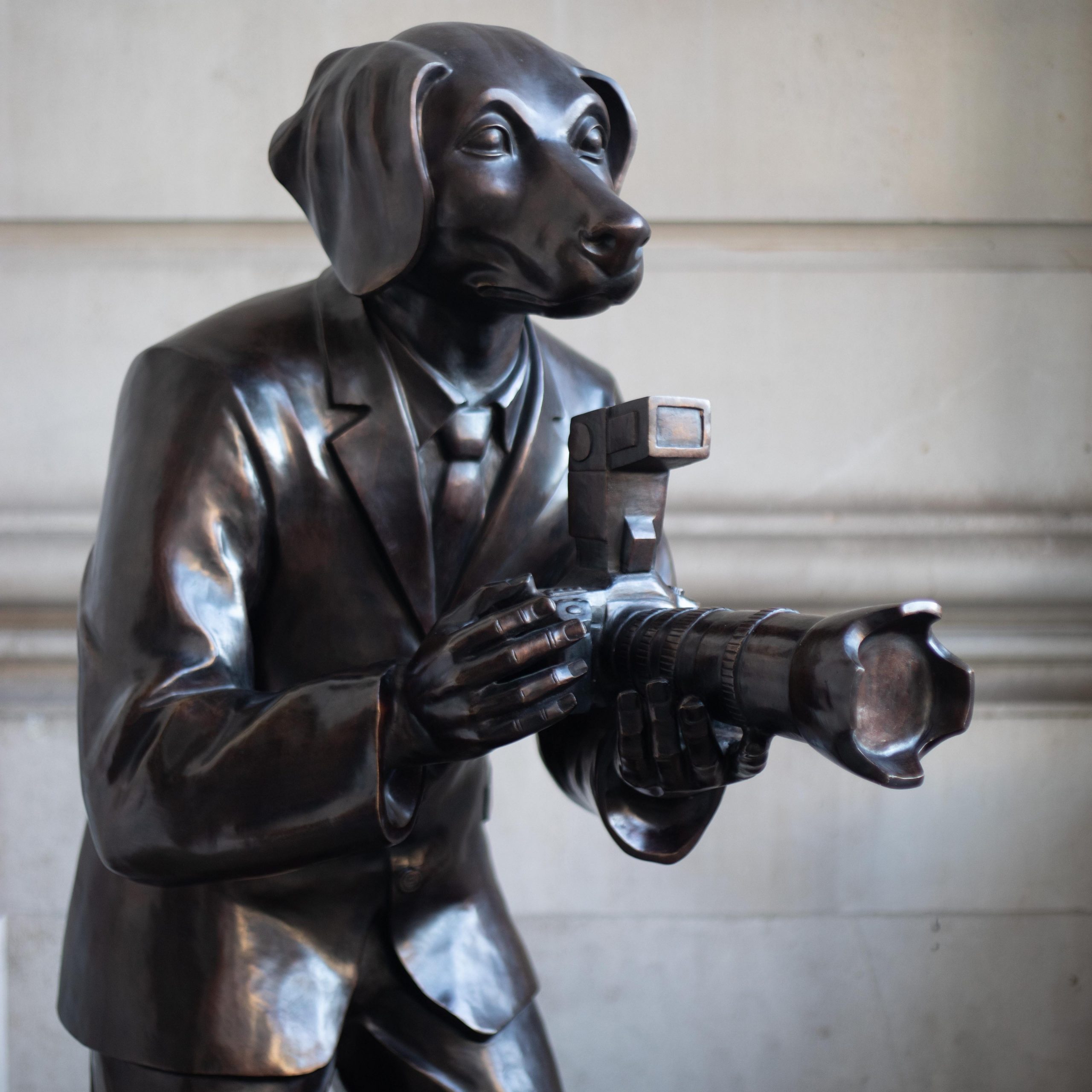
We got to St Paul’s Cathedral, took a couple of images in this area, wandered across the Millennium Bridge where I showed Paul that the chewing gum on the deck of the bridge was often painted by a local artist with tiny scenes. Across the river now and then we walked up the Southbank, passed the National Theatre, stopped at the Skatepark for a while and then headed for the Westminster Tube Station so I could head back to Queensbury and then prepare for the drive home..
Leaving the car park at around 8;30pm my Google Maps told me I’d be home soon after 10:30 but a couple of roadworks and road restrictions saw to it that I wasn’t home until 12:15. Time for bed straight away and download the photos the next day when I get home from work.
Conclusions
It was a good trip with the uni course, I was slightly surprised that there were so few of us but it meant that we could have a chat with the lecturers when we wanted to and spend some quality time without a huge crowd. I was still gutted to have been ;ate in the morning but I think it was forgotten about later. It was nice spending some time with the group and I spoke to Angus a bit more than I had before. I did feel for Noah also as he’d hung his rucksack on a toilet door earlier in the morning but it fell to the floor breaking his Canon 7D camera before he’d had a chance to use it on the trip. He changed to using his phone, but I can understand his frustration and hope that it didn’t ruin his day too much.
The exhibitions we got to see were fantastic, with the Moriyama being more to my liking than the V&A Photography Centre’s mix of other exhibitions. I am really grateful to the lecturers for organising this trip and spending time with us. The Horizon 22 was also brilliant and provided excellent views, I’d highly recommend the spot as a free attraction when visiting London whether it’s day or night but make sure you book it to avoid disappointment.

Be First to Comment